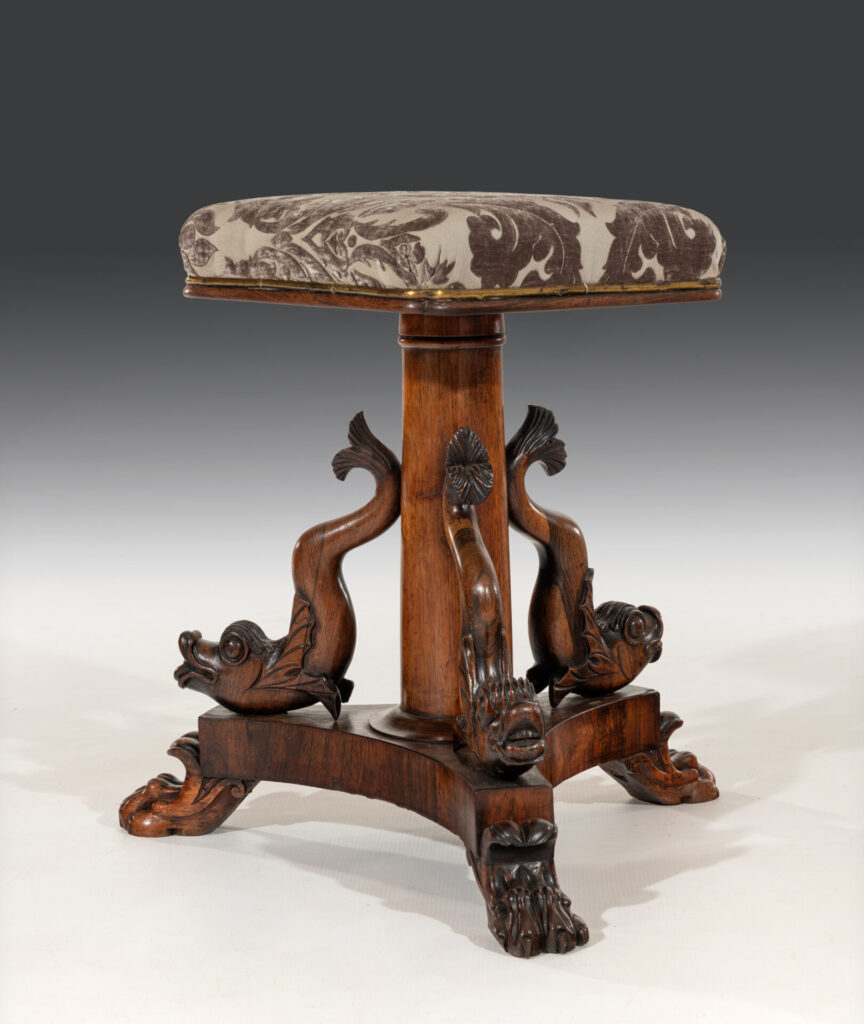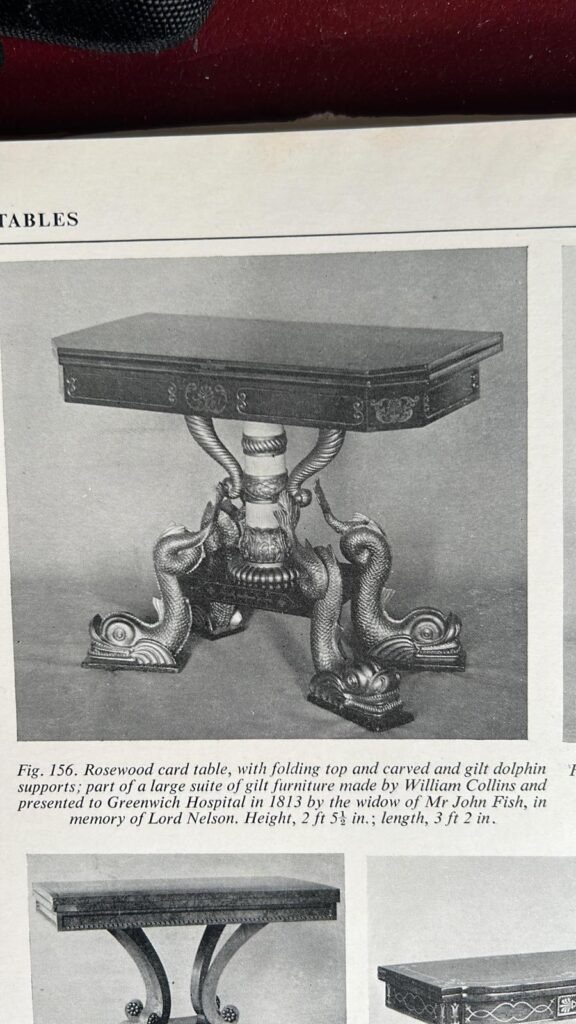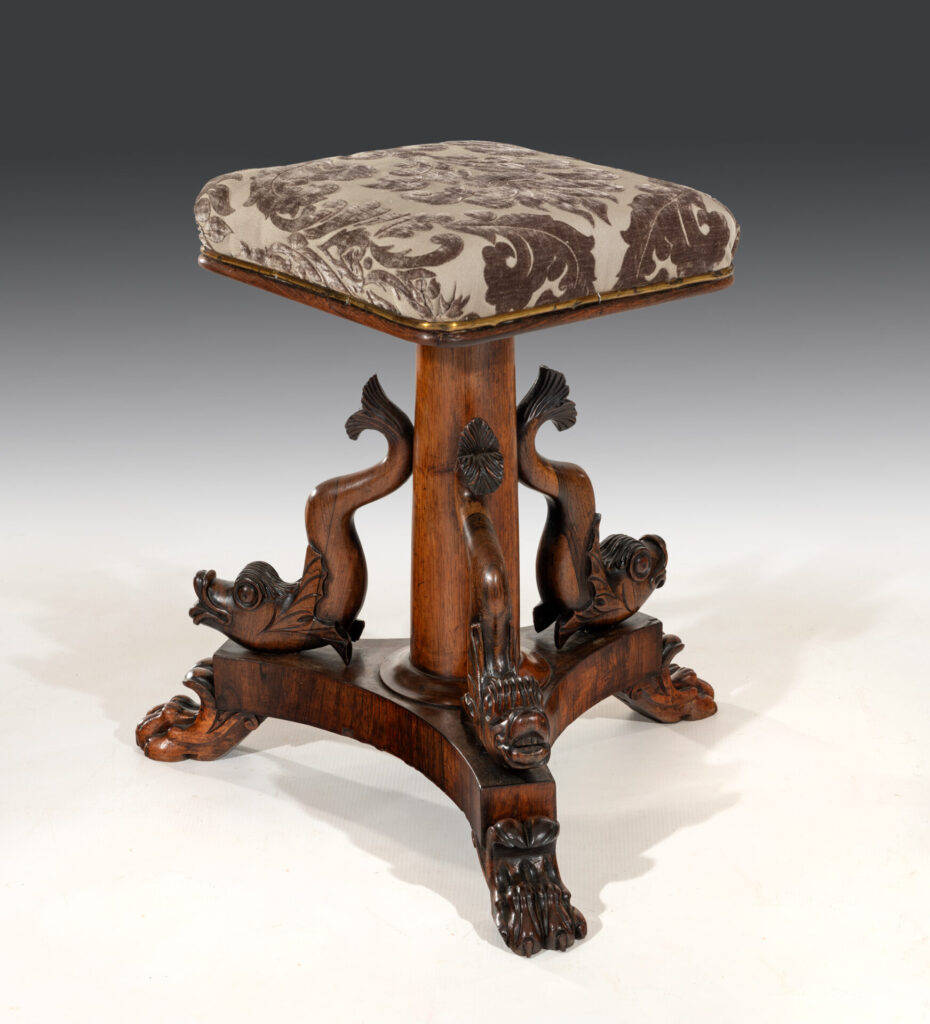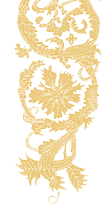Unusual Regency Rosewood Piano Stool



Unusual Regency Rosewood Piano Stool
English
Rare early 19th century Regency period piano stool.
The square upholstered seat retains an olive green patterned fabric with a gilt brass trim to the rosewood seat edge. The seat does adjust up or down from its lowest height of 51cm to a maximum of 65cm.
The centre rosewood column is adorned with crisply carved rosewood dolphins that rest on a triform concave plinth base. The piano stool is raised on out-swept carved and scrolled paw feet.
The design and form with the use of dolphins is rare.
Literature
It is difficult to find a definitive answer as to why dolphins were used in furniture design.
Dolphins, the marine mammal, have been used as decorative motifs by European artists for thousands of years, but their use dates from well before a proper taxonomic study had been made.
The first English explorers named the large fish they observed patrolling the waters off the eastern coast of North America ‘dolphins’, thus causing centuries of confusion with the better-known marine mammal.
So, the artists of the time didn’t know they were mammals, they looked like fish, therefore they were fish as far as they were concerned, hence why they are often depicted with scales.
The source of this confusion may be John White, who accompanied both Richard Grenville and Walter Raleigh on exploratory tours of the New World in the 1580s, charting and illustrating what he saw along the way. White’s ‘Duratho’ became Dolphin in common Elizabethan English, and endured. The Dolphin fish later became known as ‘dorado’, and later still as ‘mahi-mahi.
In Italian Renaissance art, the dolphin was a symbol of salvation. They are also the symbol for love and swiftness. The dolphin was also a Christian symbol, most often used as a symbol of the Christian himself rather than Christ, though the dolphin was also used as a representation of Christ, most often in combination with an anchor symbol.
Dolphin fish seem to have been popular decorative motifs in furniture of the English Regency and American Federal and Empire periods, carved in relief or in part on sofas and tables as well as mirrors. There are many examples of dolphins used as ‘feet’ or ‘legs’ of furniture.
The fashion for dolphin ornamentation underwent a revival in the early 19th century. A celebrated suite of dolphin furniture was made by William Collins, and presented to Greenwich Hospital in 1813 by the widow of Mr. John Fish, in memory of Lord Nelson, now exhibited at the Brighton Pavilion (Jourdain, p. 73, fig. 156 see photo).
Dimensions
Height 51.00 (minimum)1825 (20.08 inches)
Width 33.001825 (12.99 inches)
Depth 33.001825 (12.99 inches)
Stock No: 11517
Sold


